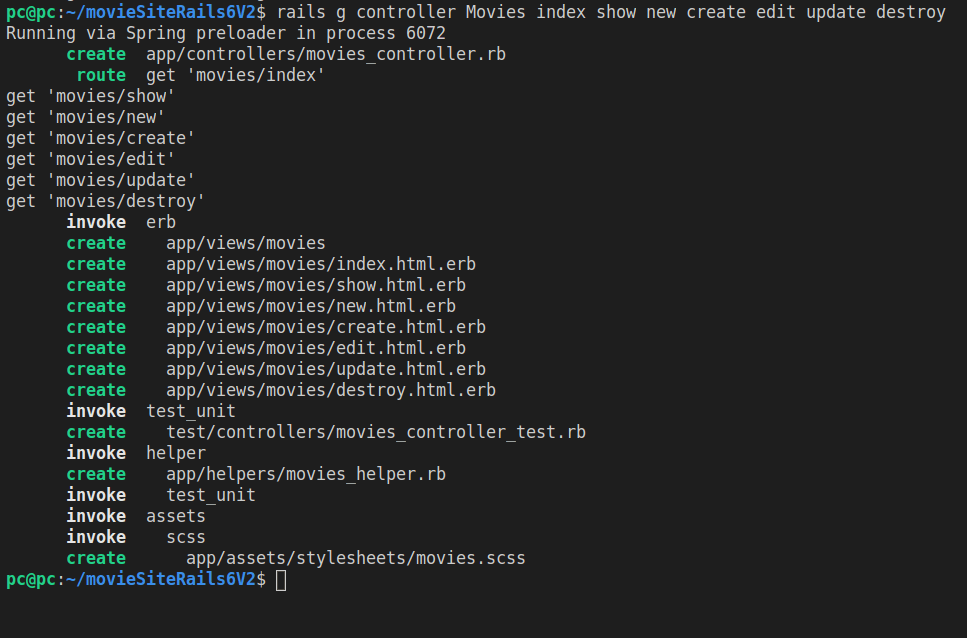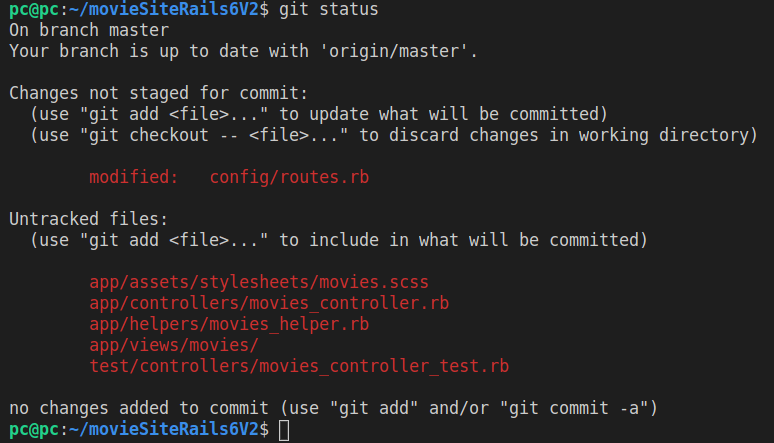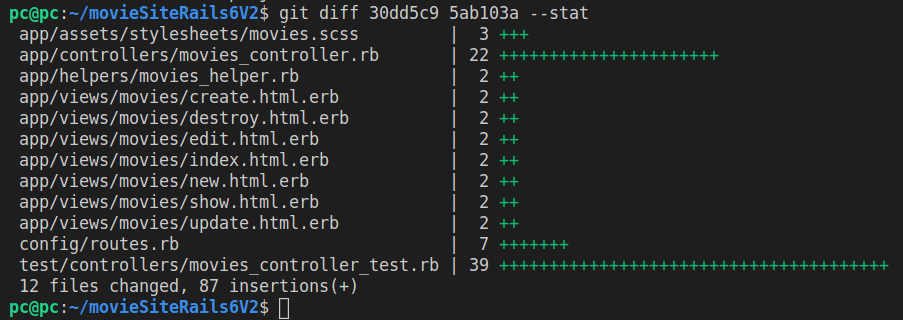Find the Movie With Maximum Reviews Ruby on Rails
In the previous article, we've added user hallmark and authorization with devise, and nosotros've set the Movies model.
In this article, we'll add the CRUD functionality - create, read, update, delete - for the Movies model.
 Image past CodingExercises
Image past CodingExercises
Let'due south begin by inspecting our database tables using the Rails console:
track c ActiveRecord::Base of operations.connection.tables The returned output:
=> ["schema_migrations", "ar_internal_metadata", "users", "movies"] Alright, let's inspect the columns in the movies tabular array.
Movie.columns.map(&:proper name) Here's the output:
=> ["id","title","description","img","comprehend","rate","user_id","created_at","updated_at"] Let's load all the movies; note: we know this will not return annihilation:
As expected the above ActiveRecord query will map onto an PostgreSQL query, and execute it, returning empty:
Picture Load (0.5ms) SELECT "movies".* FROM "movies" LIMIT $i [["LIMIT", 11]] => #<ActiveRecord::Relation []> Dandy, everything in our model seems to work.
Before nosotros can effectively work with the Moving picture Model, we need to add the movie controller too.
Adding Motion picture Controller
To add together the pic controller, nosotros'll run this on the control line:
rails chiliad controller Movies index show new create edit update destroy Like to how we added a unmarried habitation activeness to the Pages controller, nosotros've added all the needed actions for the Movies controller. 
To see the change to our file structure, let's run git status: 
The newest updates are committed as "Add the Movies controller" commit message.
Permit'southward also do a git diff --stat to compare the newest commit with the previous i. To know the actual SHAs that we'll be comparing, nosotros'll do the git log --oneline first, then take the ii nigh recent ones.
git unequal 30dd5c9 5ab103a --stat Here'southward a screenshot of the output: 
Currently the movies_controller.rb looks like this:
class MoviesController < ApplicationController def index end def testify end def new end def create cease def edit end def update finish def destroy end terminate Let'due south update it to this:
before_action :set_movie , only: [ :show , :edit , :update , :destroy ] def index @movies = Motion picture . all terminate def show end def new @flick = Movie . new puts @movie end def create @user = current_user puts @user @film = @user . movies . create ( params_requre ) redirect_to movies_path #@motion picture = @user.movies.new(params_requre) # if movie.save end def edit stop def update puts "77777777777777777777" @movie . update ( params_requre ) redirect_to movies_path end def destroy finish def set_movie @picture show = Movie . find ( params [ :id ]) puts @movie terminate protected def params_requre params . require ( :movie ). allow ( :title , :description ) terminate finish Additionally, looking at the Movie model (divers in the models/pic.rb file) nosotros can run into that information technology defines the relationship between users and movies:
form Movie < ApplicationRecord belongs_to :user end We besides need to define the other side of the human relationship, inside the models/user.rb file, past calculation this line just above the endmost terminate line of the User form definition.
Now the entire updated models/user.rb files looks like this:
form User < ApplicationRecord # Include default devise modules. Others available are: # :confirmable, :lockable, :timeoutable, :trackable and :omniauthable devise :database_authenticatable , :registerable , :recoverable , :rememberable , :validatable has_many :movies cease Let'south add the changes to movies controller and user model, in a commit titled "Update user model and movies controller".
Now that we've got everything fix, let'due south accept a quick detour and add a new movie using the rails console.
Why?
Because information technology'due south faster to do it this manner than having to add the code to all the views that we've added when the movies controller was generated. Currently, all these view files are only empty slots waiting to exist filled with actual code. Right now, they're but static HTML, like, for example, the views/movies/create.html.erb file:
<h1>Movies#create</h1> <p>Find me in app/views/movies/create.html.erb</p> Let'due south also come across how the generated movies controller affected the contents of the routes.rb file:
Rails . application . routes . draw do go 'movies/index' get 'movies/show' get 'movies/new' go 'movies/create' get 'movies/edit' get 'movies/update' go 'movies/destroy' root 'pages#home' devise_for :users #get 'pages/home' # For details on the DSL available within this file, see https://guides.rubyonrails.org/routing.html terminate We'll go rid of all these get requests and instead merely practise resources, similar this:
Track . awarding . routes . draw do # get 'movies/alphabetize' # get 'movies/show' # get 'movies/new' # go 'movies/create' # get 'movies/edit' # get 'movies/update' # become 'movies/destroy' root 'pages#habitation' resources :movies devise_for :users # For details on the DSL available within this file, run into https://guides.rubyonrails.org/routing.html end Alright, so let's accept our detour and apply the rails panel first.
Add together a New Film With Track Panel
To add together a movie, we commencement need to make sure we take a user in the database. Permit'due south run User.outset and User.second in the panel.

As we tin see, we have the first User in the database, but for the second, it returns nil.
Let'due south at present see if at that place are any movies that vest to User.starting time:

Finally, let's add together ane.
We'll need to add all the entries for each of the movies table columns, except for the first table column, id.
Equally a reminder, hither'southward what gets returned from running Moving-picture show.columns.map(&:name)
=> ["id","title","description","img","encompass","charge per unit","user_id","created_at","updated_at"] Ok, so at present we're ready to add a movie.
I've split the following code on several lines for easier reading; still, you should type information technology equally a one-liner in the Rails console:
User . get-go . movies . new ( championship :"The Matrix" , description :"Neo Anderson lives in a simulation..." , img :"https://upload.wikimedia.org/wikipedia/en/thumb/c/c1/The_Matrix_Poster.jpg/220px-The_Matrix_Poster.jpg" , cover :"https://upload.wikimedia.org/wikipedia/en/pollex/c/c1/The_Matrix_Poster.jpg/220px-The_Matrix_Poster.jpg" ). save Here'south the output in the console: 
Let'southward now run User.offset.movies over again:
Here's the output this fourth dimension: 
Now that we have added our showtime movie using the Rail console, let's add the views so that our web app visitors can also do it from our web app's frontend.
Calculation the Movie CRUD Views
Let's kickoff with movies edit. Open app/views/movies/edit.html.erb and add together this code at the bottom:
<%= form_form :movie , url: movie_path , method :patch practice | f | %> Title: <%= f . text_field :title %> <br> Description: <%= f . text_field :description %> <br> <%= f . submit %> <% end %> Now, visit this URL: localhost:3000/movies/edit.
Y'all'll get an error.
Why is that?
To sympathize why this is happenning, permit'due south visit a different URL: localhost:3000/movies/new.
This time, the actual URL gets served without issues: 
The reason is the lawmaking in the movies_controller.rb.
While we practise accept the lawmaking for calculation a new flick in the controller, nosotros don't have a definition for the edit action:
def new @picture show = Movie . new puts @pic end . . def edit end Note the the two vertical dots in the lawmaking above are added for brevity, and are a stand-in for the actual code.
Manifestly, we need to add together some code to our edit activeness.
Here it is:
def edit @movie = Movie . detect ( params [ :id ]) stop To be continued…
Source: https://www.codingexercises.com/projects/build-a-simple-movie-review-website-in-rails-6-part-3
0 Response to "Find the Movie With Maximum Reviews Ruby on Rails"
Enviar um comentário